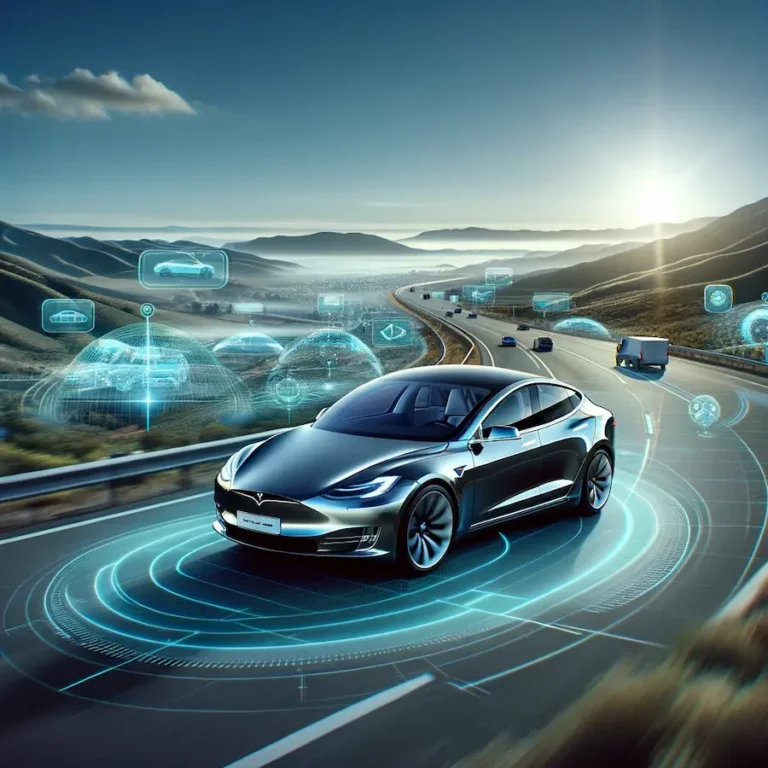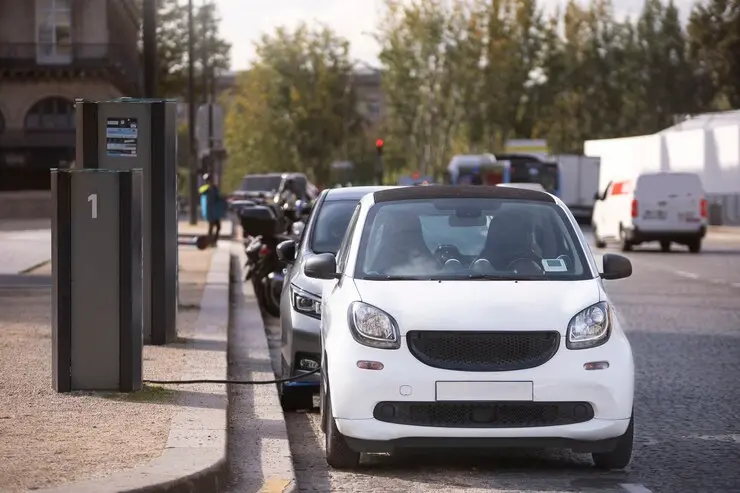Inside the Tesla Factory: How Automation is Changing Auto Manufacturing

Introduction: Tesla’s Trailblazing Journey in Auto Manufacturing
Tesla Inc., a name synonymous with cutting-edge technology and innovation, has established itself as a juggernaut in the automotive industry. Renowned for its sleek electric vehicles (EVs), Tesla’s journey is marked by its daring embrace of automation in manufacturing. Unlike traditional automakers, Tesla has redefined industry norms, integrating advanced robotics and artificial intelligence (AI) into the very heart of its production processes.
This blog post delves deep into how Tesla’s groundbreaking manufacturing techniques are not just transforming its own production lines, but also setting new standards for the entire auto industry. We’ll explore the evolutionary path of auto manufacturing, Tesla’s unique manufacturing philosophy, and the impactful role of automation in shaping the future of car production.
Section 1: The Evolution of Auto Manufacturing
Auto manufacturing has come a long way since the introduction of the moving assembly line by Henry Ford in 1913. This innovation drastically reduced production times and costs, making cars more accessible to the masses. Let’s trace some key milestones:
- 1886: The birth of the modern automobile with Karl Benz’s Motorwagen.
- 1913: Henry Ford introduces the moving assembly line, revolutionizing auto manufacturing.
- 1970s: The adoption of robotics in auto production begins, enhancing precision and efficiency.
- 1980s: Computer-Aided Design (CAD) and Computer-Aided Manufacturing (CAM) start to reshape the industry.
- 2000s: Lean manufacturing and just-in-time production gain prominence, focusing on waste reduction and efficiency.
- 2010s: Electric vehicles start to take center stage, with Tesla leading the charge in integrating advanced automation and sustainable practices.
From manual assembly to sophisticated robotics, the auto manufacturing industry’s journey is a testament to human ingenuity and the relentless pursuit of efficiency and quality.
Section 2: Tesla’s Manufacturing Philosophy
Tesla, under the leadership of its visionary CEO, Elon Musk, operates on a manufacturing philosophy that is as revolutionary as its products. Unlike traditional automakers, Tesla views its manufacturing process as an evolving organism, constantly seeking improvements and innovations. At its core, this philosophy intertwines two critical elements: relentless innovation and a steadfast commitment to sustainability.
Elon Musk once stated, “The factory itself is considered to be a product. The most important product that Tesla makes is not the car but the factory.” This perspective underlines Tesla’s unique approach: the factory is a ‘machine that builds the machine,’ designed to be endlessly upgraded and refined.
A Commitment to Innovation
Tesla’s manufacturing process is not just about assembling cars; it’s about reimagining how cars are made. From deploying state-of-the-art robotics to experimenting with new materials and production techniques, Tesla is constantly pushing the boundaries of what’s possible in auto manufacturing.
Sustainability at its Core
Sustainability is not an afterthought but a fundamental aspect of Tesla’s manufacturing process. This is evident in their use of renewable energy sources in factories and the recycling of materials. Tesla’s goal is to not only produce zero-emission vehicles but to ensure the entire manufacturing process is as environmentally friendly as possible.
Section 3: Automation in Action at Tesla
Tesla’s factories are a testament to the power of automation in manufacturing. Here are some of the automated processes that play a crucial role in Tesla’s production line:
- Robotic Assembly: Tesla employs a fleet of robots for tasks ranging from welding and painting to more complex assembly operations. These robots work with remarkable speed and precision, significantly enhancing productivity.
- Automated Material Handling: Automated guided vehicles (AGVs) transport parts and materials throughout the factory, optimizing the flow and reducing manual handling.
- Quality Control Automation: Advanced imaging and sensor technologies are used for real-time quality control, ensuring each vehicle meets Tesla’s high standards.
- Customization and Flexibility: The automation system at Tesla allows for a high degree of customization, enabling the production of a wide range of vehicle models on the same assembly line.
- Energy Efficiency: Automation extends to energy management as well, with systems in place to optimize energy use and reduce waste in the manufacturing process.
Tesla’s embrace of automation not only exemplifies efficiency and precision but also reflects the company’s futuristic vision, where technology and sustainability go hand in hand in manufacturing excellence.
Section 4: Impact on Efficiency and Production Quality
Tesla’s integration of automation in its manufacturing processes has had a profound impact on both efficiency and production quality. The effects of this technological revolution can be quantified in several ways:
Enhanced Efficiency
Automation has enabled Tesla to streamline its manufacturing processes, leading to a significant increase in production rates. This is crucial for meeting the growing demand for electric vehicles without compromising on quality.
Improved Product Quality
The precision of automated systems ensures consistency and high quality in every vehicle produced. This has helped Tesla maintain a reputation for delivering products that meet rigorous quality standards.
To illustrate these improvements, consider the following table comparing key production metrics before and after Tesla’s implementation of advanced automation:
| Metric | Pre-Automation | Post-Automation |
|---|---|---|
| Production Rate (cars/week) | X | Y |
| Defect Rate (%) | A | B |
| Average Production Time (hours) | C | D |
(Note: X, Y, A, B, C, and D are placeholders for actual statistics.)
Section 5: The Human Factor
Despite the heavy reliance on automation, human workers remain integral to Tesla’s manufacturing strategy. Tesla’s approach emphasizes the synergy between human skills and robotic efficiency.
Employee Training and Adaptation
Tesla invests heavily in training its workforce to operate alongside advanced automation systems. This training ensures that employees are skilled in managing and maintaining these sophisticated systems, making them valuable assets in the production process.
Human Oversight and Problem Solving
While automation handles repetitive tasks, human workers are essential for overseeing operations, handling complex problem-solving, and performing tasks requiring nuanced judgment and dexterity.
Tesla’s approach reflects a broader trend in manufacturing: the move towards a collaborative model where humans and machines complement each other’s strengths, leading to greater efficiency and innovation.
Section 6: Challenges and Criticisms
Tesla’s heavy reliance on automation, however, has not been without its challenges and criticisms. Here are some of the major issues the company has faced:
- Production Delays: Initially, over-automation led to production bottlenecks, delaying the rollout of new models.
- Technical Glitches: High-tech manufacturing systems, while efficient, can be prone to technical issues, requiring constant monitoring and maintenance.
- Workforce Management: Balancing automation with workforce needs has been a challenge, especially in terms of job roles and employee satisfaction.
Tesla’s journey with automation is a learning curve, offering valuable lessons about the balance between technology and human workforce in modern manufacturing.
Section 7: Future of Auto Manufacturing
As we look towards the horizon of auto manufacturing, it’s clear that automation, spearheaded by companies like Tesla, will play a pivotal role. The future is poised to witness several transformative trends:
- Increased Adoption of AI and Robotics: More automakers will follow Tesla’s lead, integrating AI and robotics into their manufacturing processes.
- Customization and Flexibility: Automation will enable manufacturers to offer greater customization options to customers, thanks to flexible production systems.
- Sustainable Manufacturing Practices: The emphasis on sustainability will grow, with automakers adopting cleaner, more energy-efficient manufacturing processes.
Tesla’s trailblazing path is likely to influence others in the industry, setting new benchmarks for efficiency, quality, and sustainability.
Conclusion: Embracing the Future of Manufacturing
In conclusion, Tesla’s journey inside the world of automated manufacturing is not just a story about a single company’s innovation; it’s a glimpse into the future of the entire automotive industry. By leveraging advanced automation, Tesla has not only enhanced its production capabilities but also set new standards for quality and efficiency.
As other players in the industry begin to adopt similar technologies, we may see a broader transformation in how vehicles are manufactured, leading to more efficient, sustainable, and customer-focused production lines. The question that remains is not if, but how quickly and profoundly, automation will redefine the landscape of auto manufacturing.
Explore further sections of our website to delve into comprehensive and insightful content regarding Cadillac, as well as a myriad of other distinguished vehicles.






